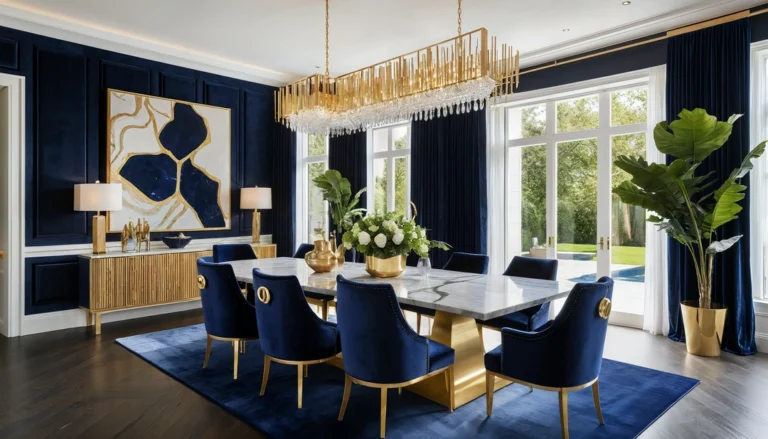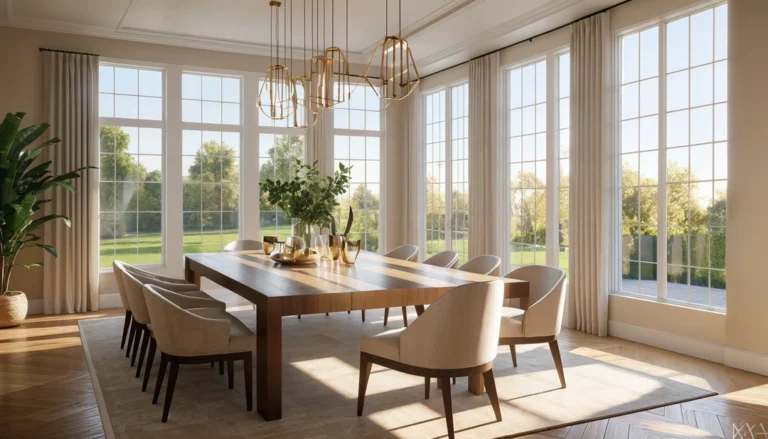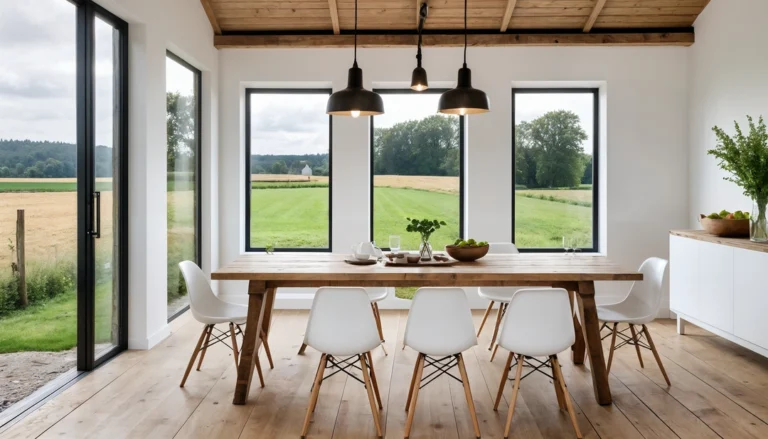In my experience working with homeowners on Japanese and Scandinavian-inspired interior projects, I’ve observed that Japandi style often creates remarkably balanced and peaceful dining environments. Through various minimalist design projects, I’ve learned that this approach typically combines the clean functionality of Scandinavian design with the natural warmth of Japanese aesthetics while maintaining practical solutions for contemporary family dining needs.
Note: For any structural modifications, electrical work, built-in furniture installations, or major renovations mentioned in this article, always consult with licensed professionals to ensure safety and code compliance.
What makes Japandi dining room design particularly appealing to many homeowners is its emphasis on creating calm, uncluttered spaces that support both daily meals and special gatherings. I’ve found that people often choose this approach because it typically promotes mindful living while providing practical storage and seating solutions that accommodate modern family lifestyles.
The key to successful Japandi dining design often lies in balancing minimalist principles with comfort and functionality. Effective Japandi spaces typically embrace natural materials and neutral colors while incorporating sufficient storage and lighting that support both intimate family meals and larger entertaining needs.
Here are 21 approaches for Japandi dining rooms that often work well in different home settings, based on observations from various minimalist and natural design projects.
1. Natural Wood Foundation Elements

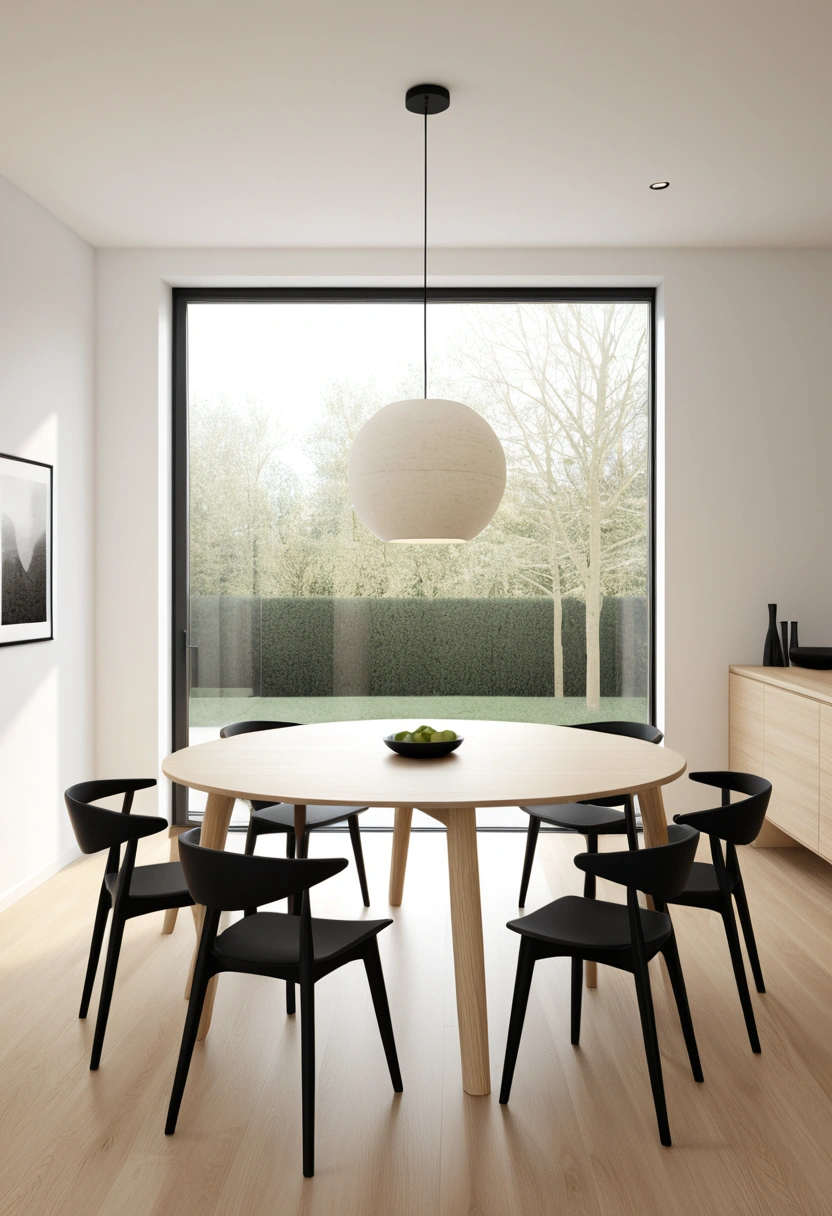
This material approach often appeals to homeowners seeking authentic, organic character. Oak tables with visible grain patterns typically provide necessary durability while offering the natural warmth characteristic of both Japanese and Scandinavian design traditions.
Design consideration: Wood furniture often requires regular maintenance while quality pieces should be selected for both aesthetic appeal and long-term durability in high-use dining environments.
Practical benefit: Solid wood dining furniture typically improves with age while providing excellent durability that justifies investment in quality pieces for family use.
2. Mixed Natural Material Integration
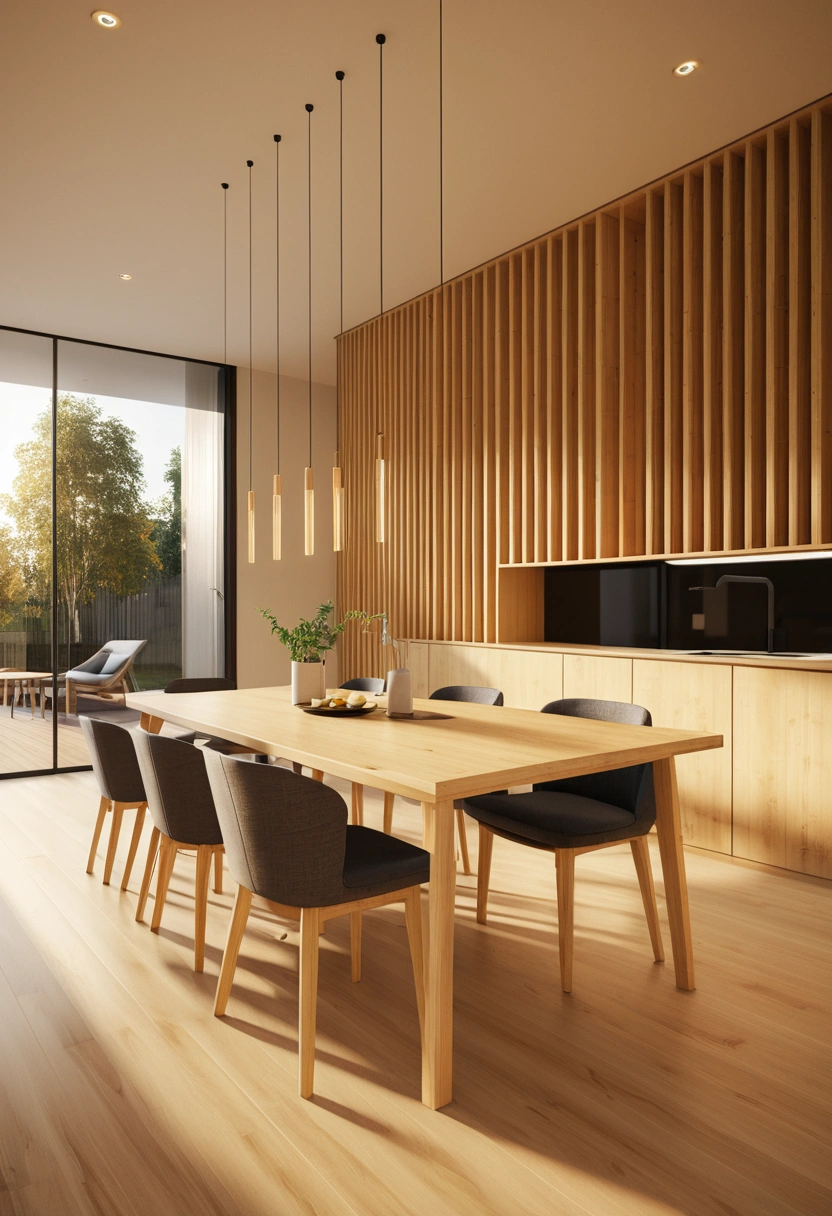

This textural approach often appeals to those wanting visual interest through material variety. Bamboo and birch combinations typically create rhythm while maintaining the natural material palette essential to Japandi aesthetics.
Design consideration: Mixed wood tones often require careful coordination while their combination should enhance rather than compete with overall room harmony.
Practical benefit: Varied natural materials typically age gracefully while providing opportunities for texture contrast that prevents minimalist spaces from appearing sterile.
3. Stone and Wood Contrast Elements
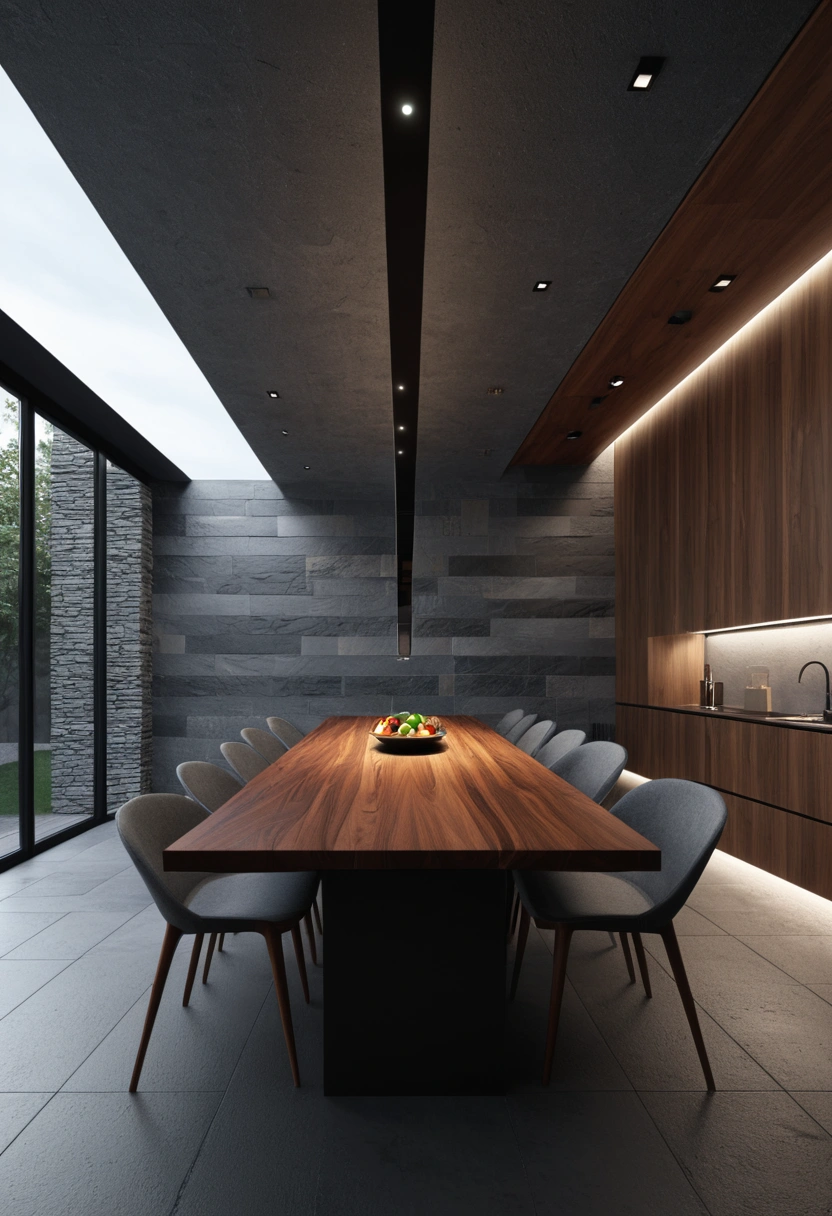

This dramatic approach often appeals to homeowners wanting sophisticated focal points. Stone accent walls combined with wood furniture typically create visual anchor points while maintaining natural material authenticity.
Design consideration: Stone applications often require structural considerations while their dramatic nature should enhance rather than overwhelm dining room scale and proportions.
Practical benefit: Natural stone typically offers excellent durability while providing texture contrast that enhances the visual appeal of smooth wood surfaces.
4. Minimalist Frame Construction

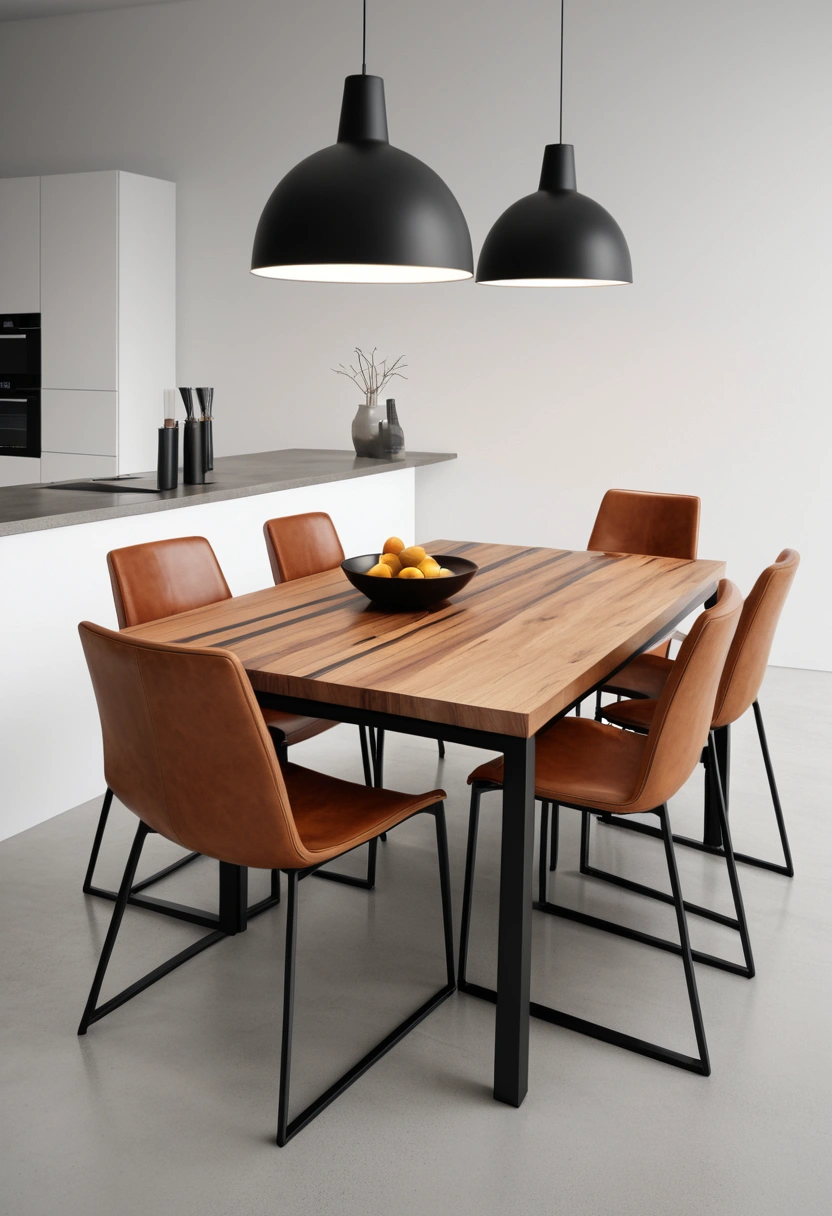
This structural approach often appeals to those wanting contemporary functionality with traditional proportions. Steel and wood combinations typically provide necessary strength while maintaining the clean lines characteristic of both design traditions.
Design consideration: Metal frame construction often requires professional assembly while their proportions should maintain comfortable dining dimensions for daily family use.
Practical benefit: Quality frame construction typically offers excellent stability while modern materials can provide improved durability compared to traditional joinery methods.
5. Built-In Seating Solutions

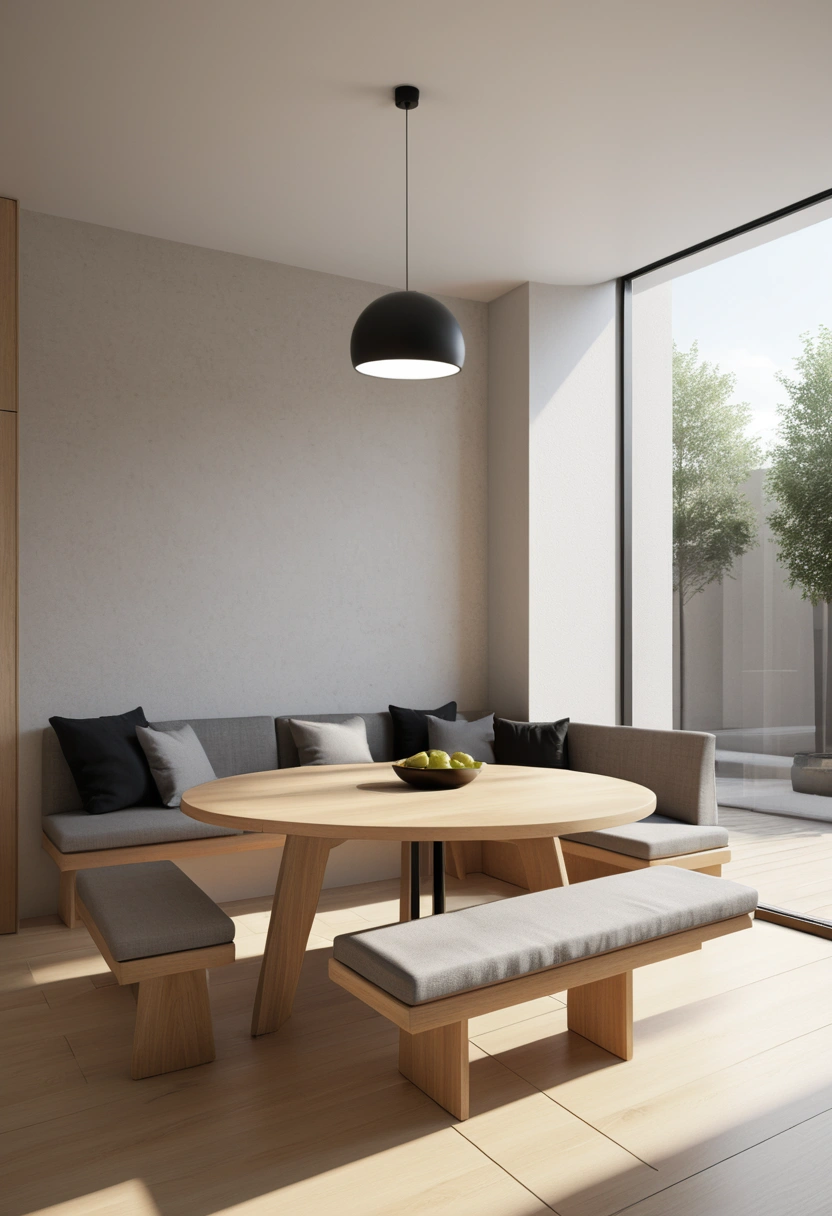
This space-efficient approach often appeals to families wanting both storage and seating in compact areas. Built-in benches typically maximize space utilization while providing hidden storage for dining accessories.
Design consideration: Built-in seating often requires custom construction while their dimensions should accommodate comfortable dining posture and adequate knee clearance.
Practical benefit: Integrated seating typically offers superior space efficiency while providing storage solutions that support organized, clutter-free dining environments.
6. Floating Storage Systems
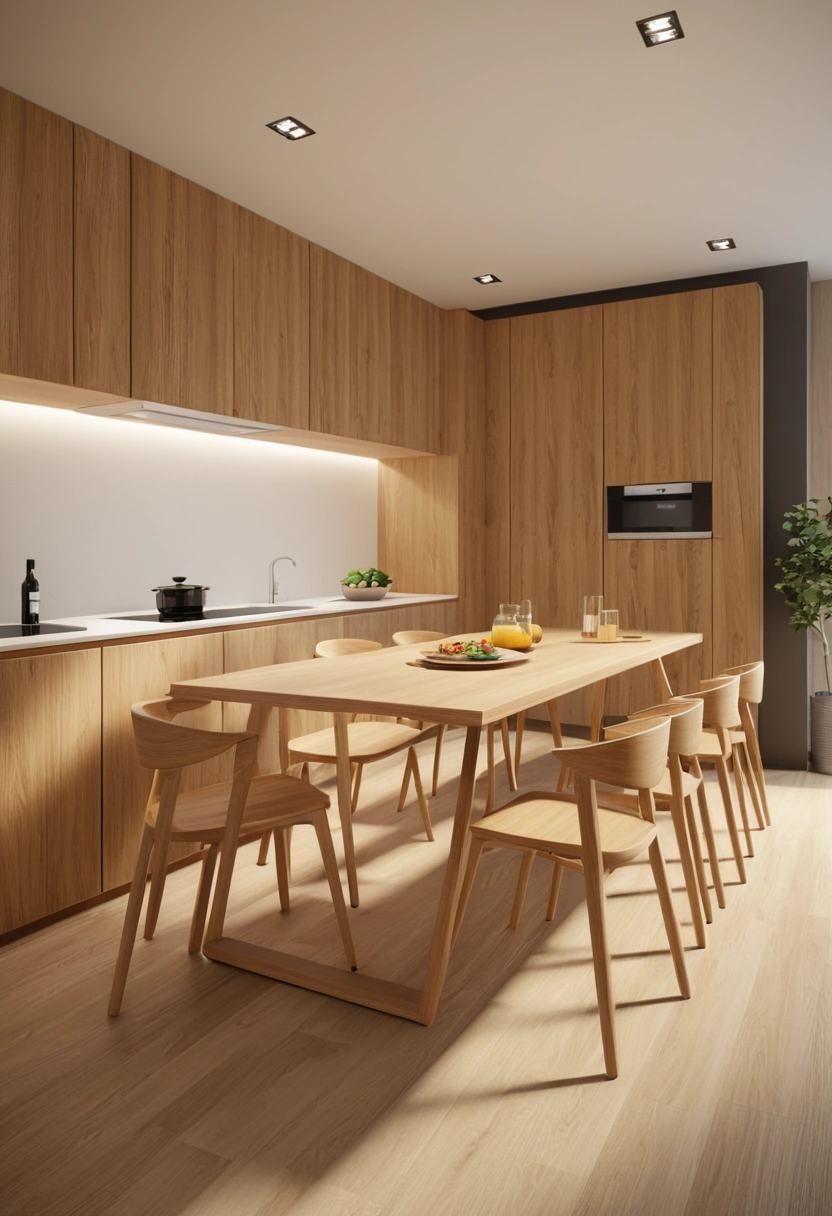

This modern approach often appeals to homeowners wanting storage without visual weight. Wall-mounted cabinets typically provide necessary storage while maintaining the open feeling essential to minimalist design.
Design consideration: Floating cabinets often require proper wall support while their placement should enhance rather than interfere with natural light distribution and room circulation.
Practical benefit: Wall-mounted storage typically improves floor space efficiency while providing easy cleaning access beneath furniture and fixtures.
7. Translucent Room Division
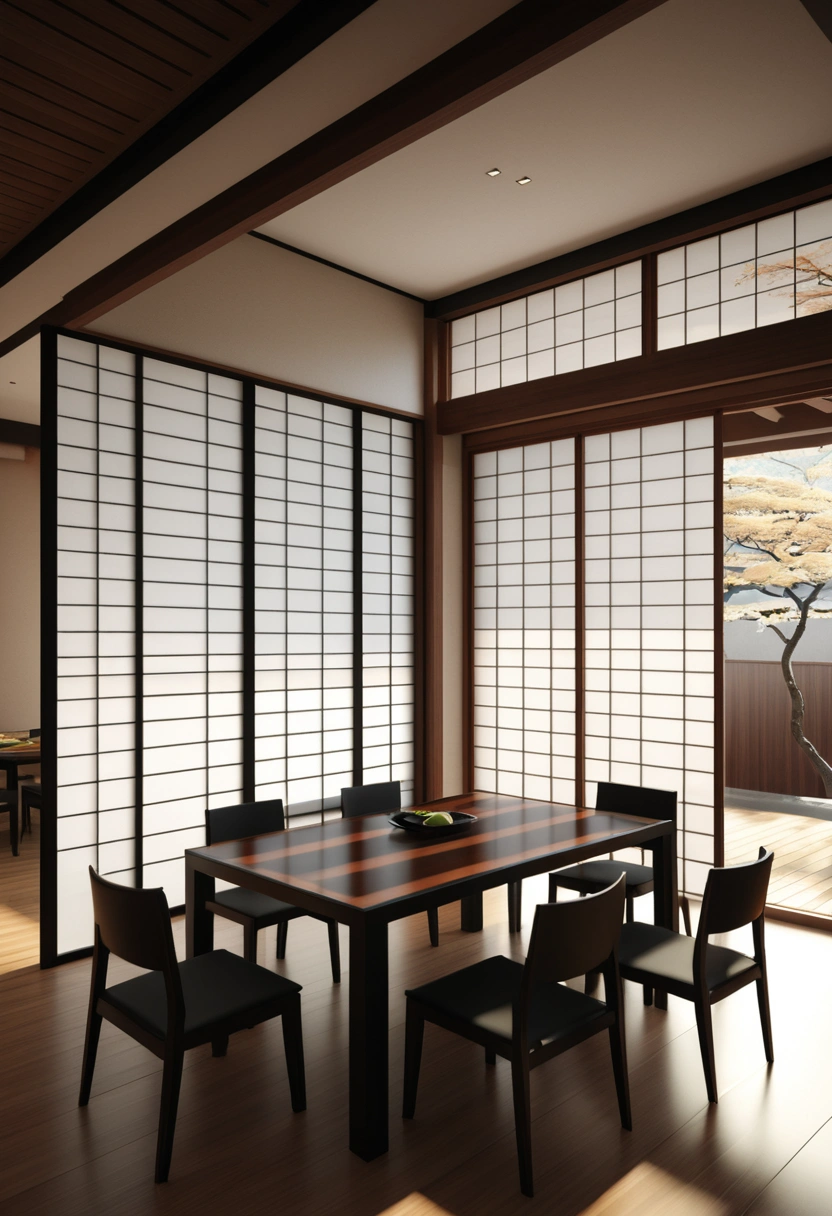

This spatial approach often appeals to open-plan homes wanting dining area definition without blocking light. Frosted glass panels typically provide privacy while maintaining visual connection between spaces.
Design consideration: Glass room dividers often require professional installation while their transparency should enhance rather than disrupt natural light flow throughout connected spaces.
Practical benefit: Translucent divisions typically maintain open feelings while providing acoustic separation that enhances dining comfort during different family activities.
8. Layered Lighting Design
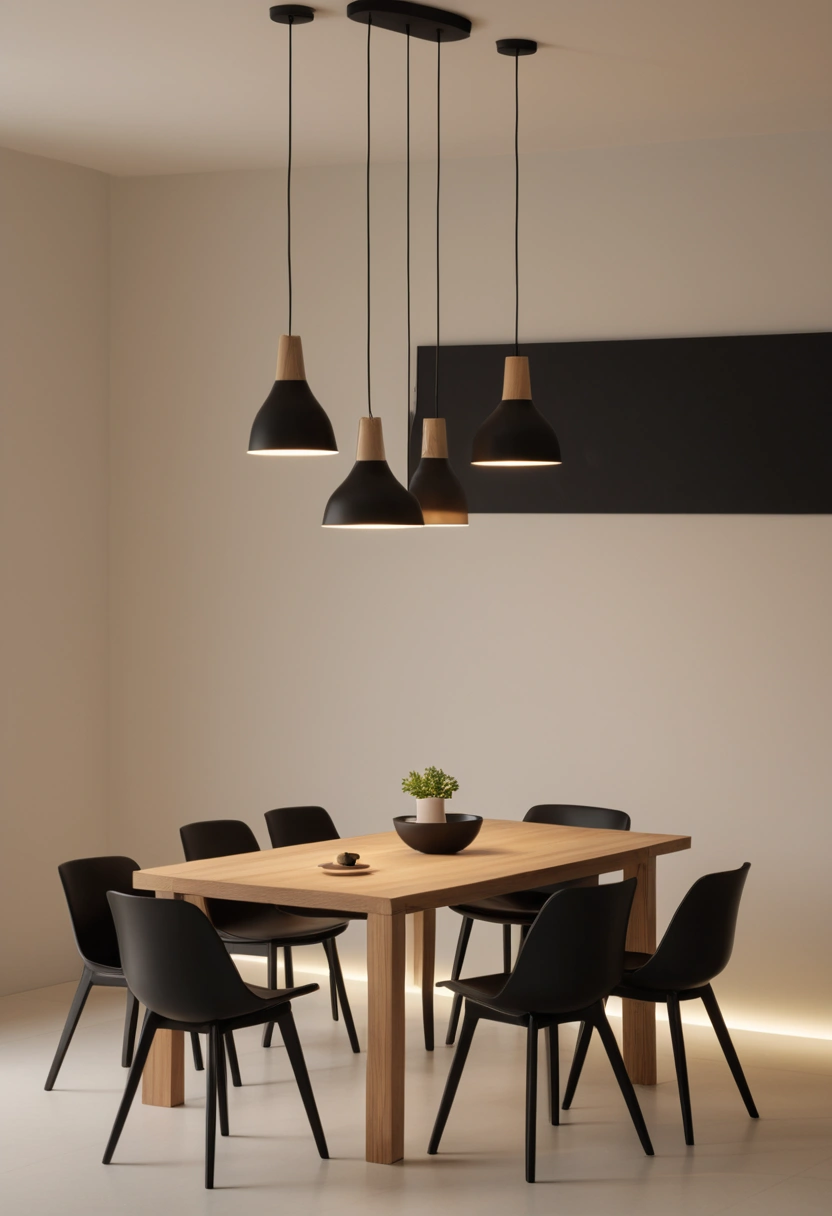

This illumination approach often appeals to those wanting flexible, atmospheric lighting. Multiple pendant fixtures typically provide focused task lighting while creating visual rhythm above dining surfaces.
Design consideration: Pendant lighting often requires appropriate hanging heights while their spacing should provide even illumination without interfering with conversation or serving activities.
Practical benefit: Layered lighting typically accommodates various activities while providing dimming capabilities that enhance both daily meals and evening entertaining.
9. Natural Light Optimization
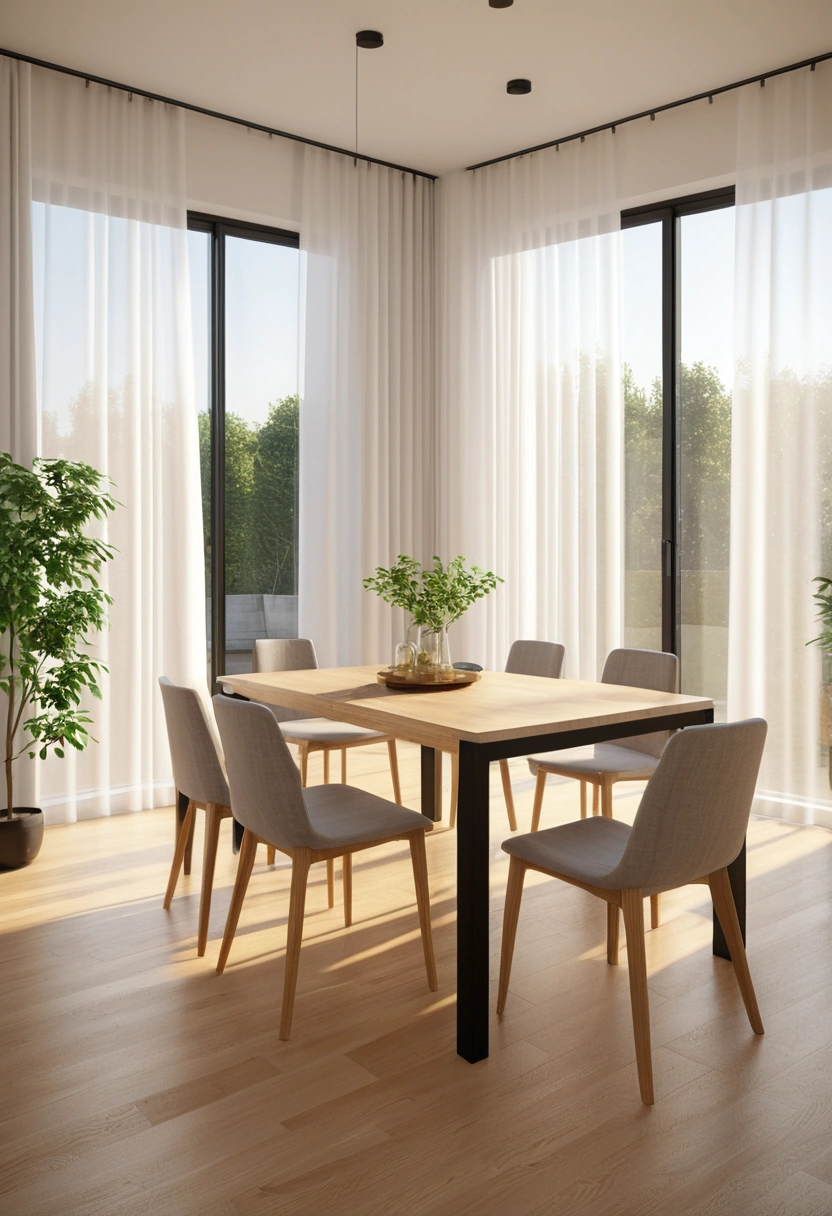

This environmental approach often appeals to homeowners wanting to maximize daylight benefits. Large windows with minimal frames typically flood spaces with natural light while maintaining connection to outdoor environments.
Design consideration: Extensive glazing often requires appropriate sun control while window treatments should provide privacy options without blocking beneficial natural light.
Practical benefit: Natural light typically reduces energy costs while providing psychological benefits that enhance the dining experience throughout different seasons.
10. Neutral Color Coordination
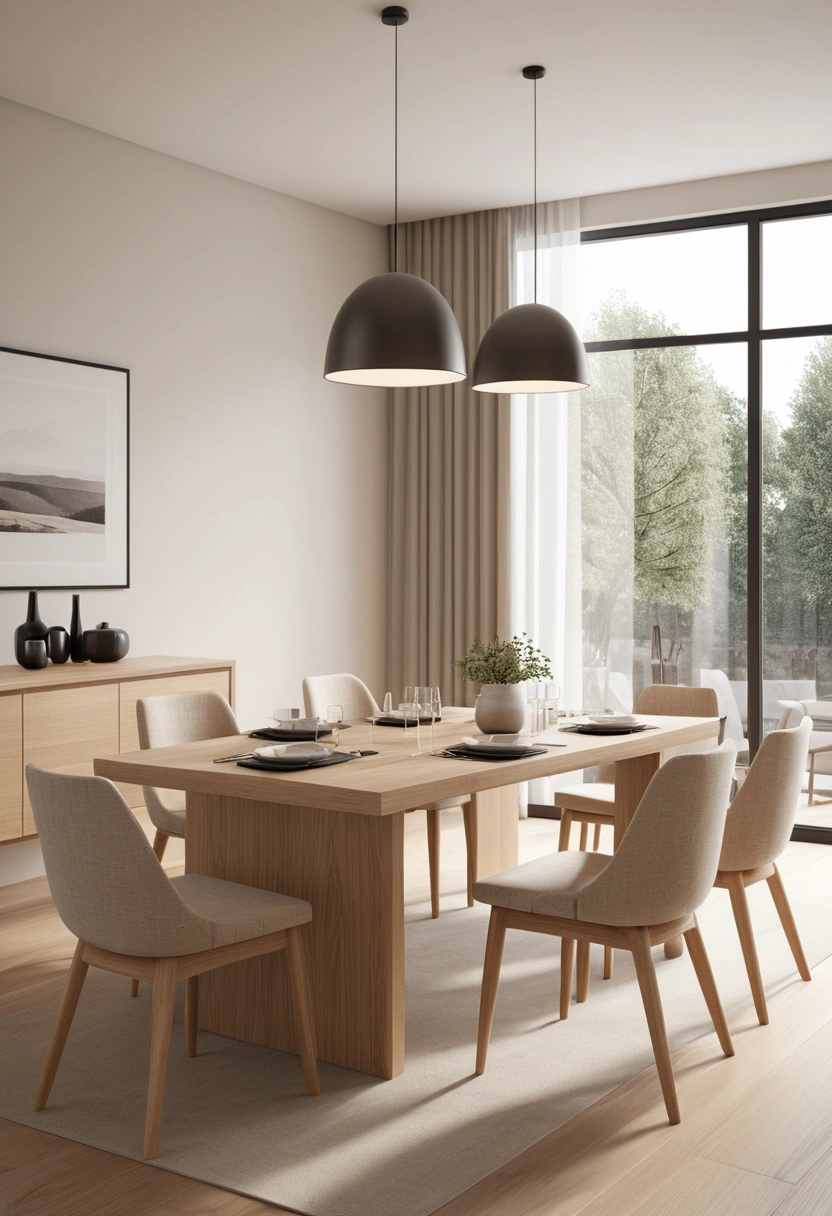
This palette approach often appeals to those wanting calm, sophisticated atmospheres. Layered neutral tones typically create depth while maintaining the serene character essential to Japandi design philosophy.
Design consideration: Neutral palettes often require texture variation while their subtlety should enhance rather than flatten the visual interest of natural materials and forms.
Practical benefit: Neutral color schemes typically remain relevant longer while providing flexibility to adjust accent elements seasonally or as preferences change.
11. Strategic Accent Placement
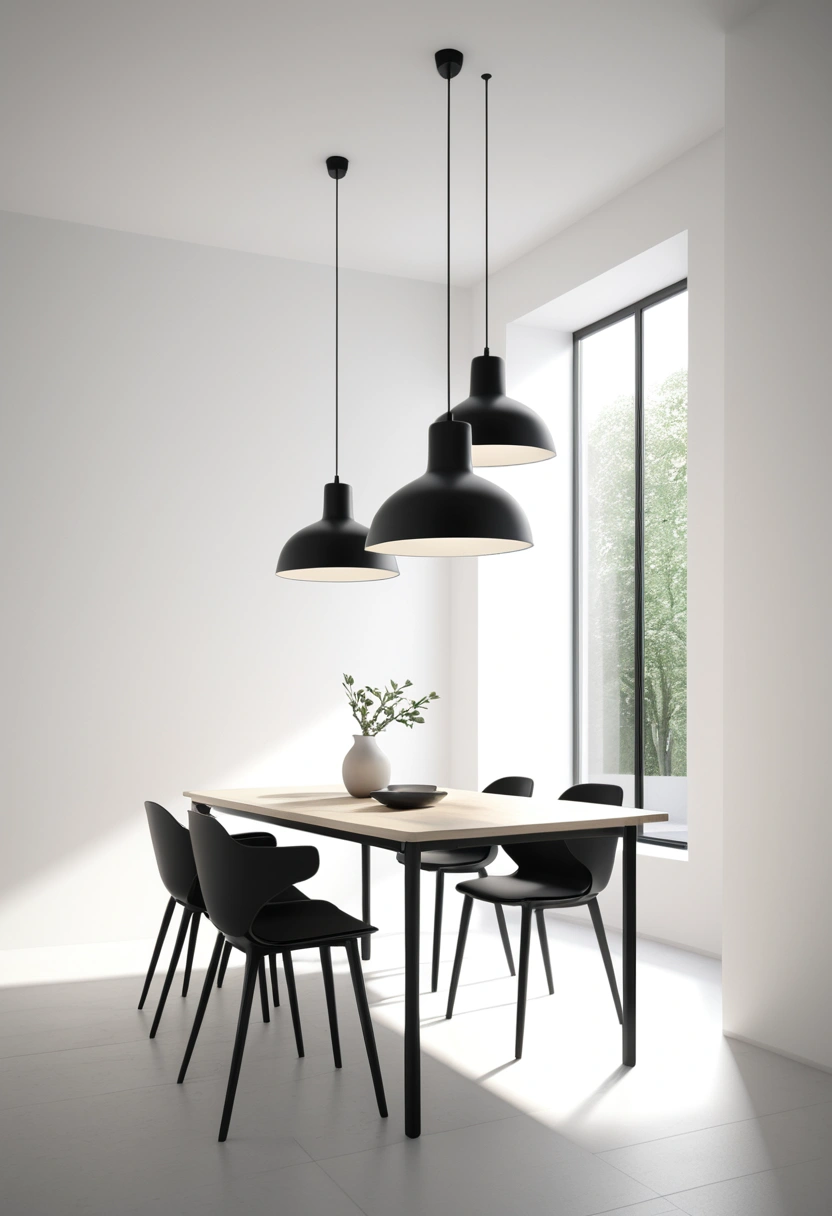

This contrast approach often appeals to homeowners wanting sophisticated depth without overwhelming simplicity. Black accent elements typically provide necessary visual anchors while maintaining overall design restraint.
Design consideration: Dark accents often work best in limited quantities while their placement should enhance rather than compete with natural material beauty and room proportions.
Practical benefit: Strategic contrast elements typically hide wear better than light alternatives while providing timeless sophistication that doesn’t quickly become outdated.
12. Textural Material Mixing
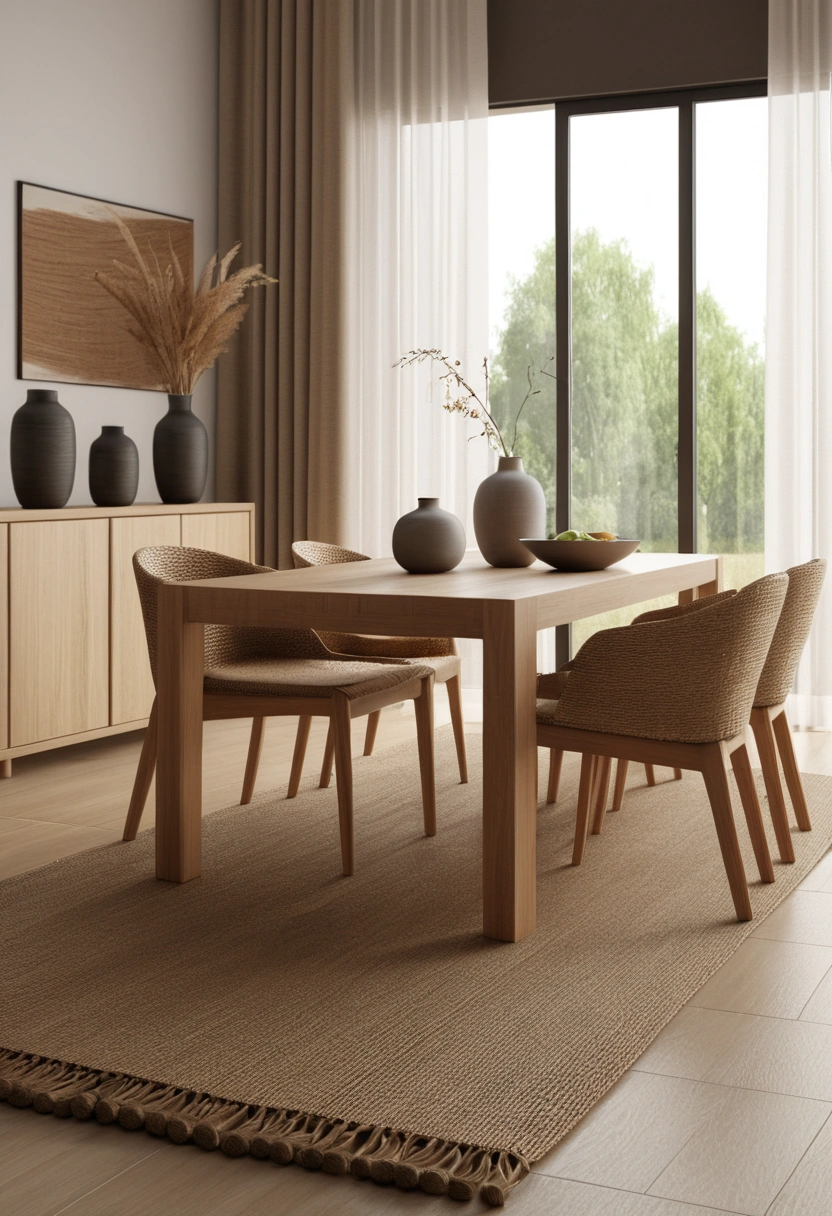
This sensory approach often appeals to those wanting tactile richness within minimalist frameworks. Varied surface textures typically provide visual interest while maintaining color discipline characteristic of Japandi aesthetics.
Design consideration: Texture combinations often require careful balance while their variety should enhance rather than overwhelm the clean simplicity essential to this design approach.
Practical benefit: Mixed textures typically hide minor wear patterns while providing sensory appeal that enhances the dining experience through tactile engagement.
13. Compact Space Optimization
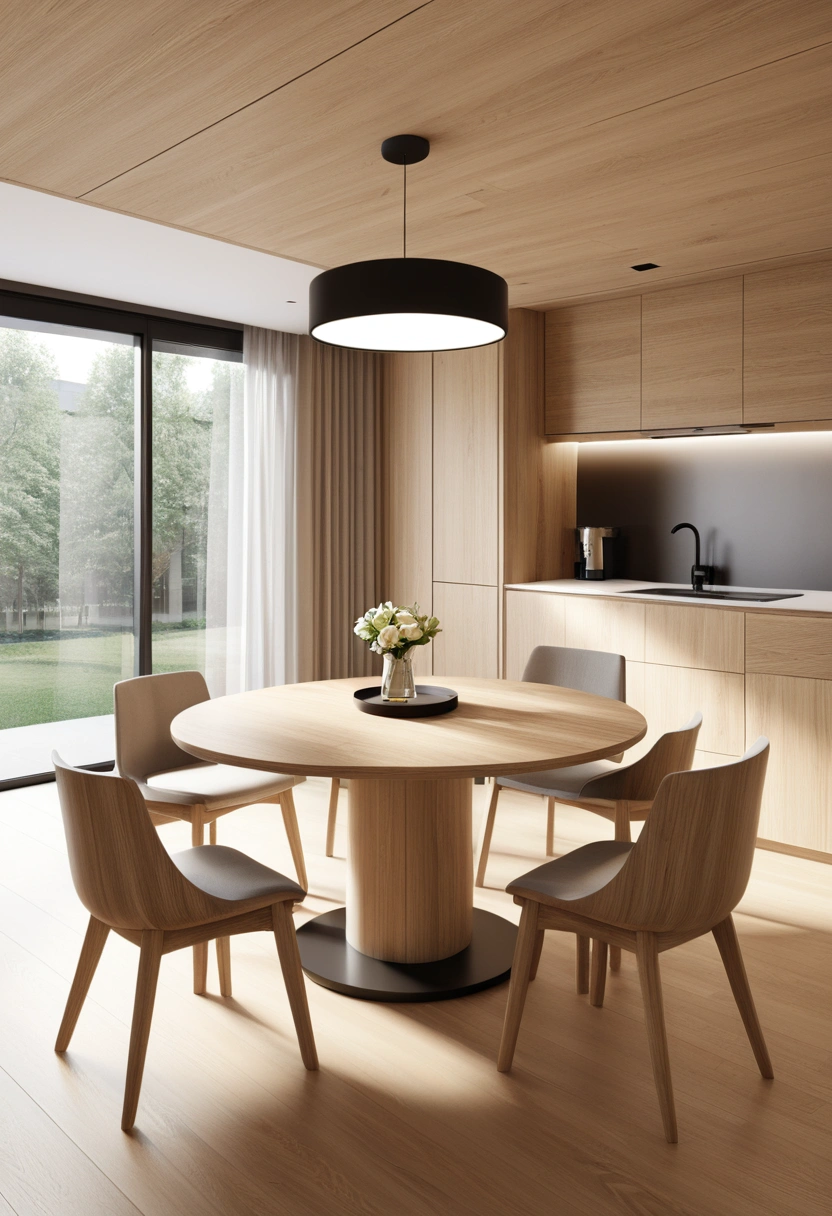

This efficiency approach often appeals to smaller homes wanting maximum functionality. Intelligent space planning typically accommodates necessary dining functions while maintaining the uncluttered aesthetic essential to Japandi design.
Design consideration: Compact dining areas often require multi-functional furniture while their planning should maintain comfortable circulation and adequate serving space.
Practical benefit: Efficient space use typically improves daily functionality while demonstrating how thoughtful design can make smaller areas feel spacious and comfortable.
14. Open Plan Integration
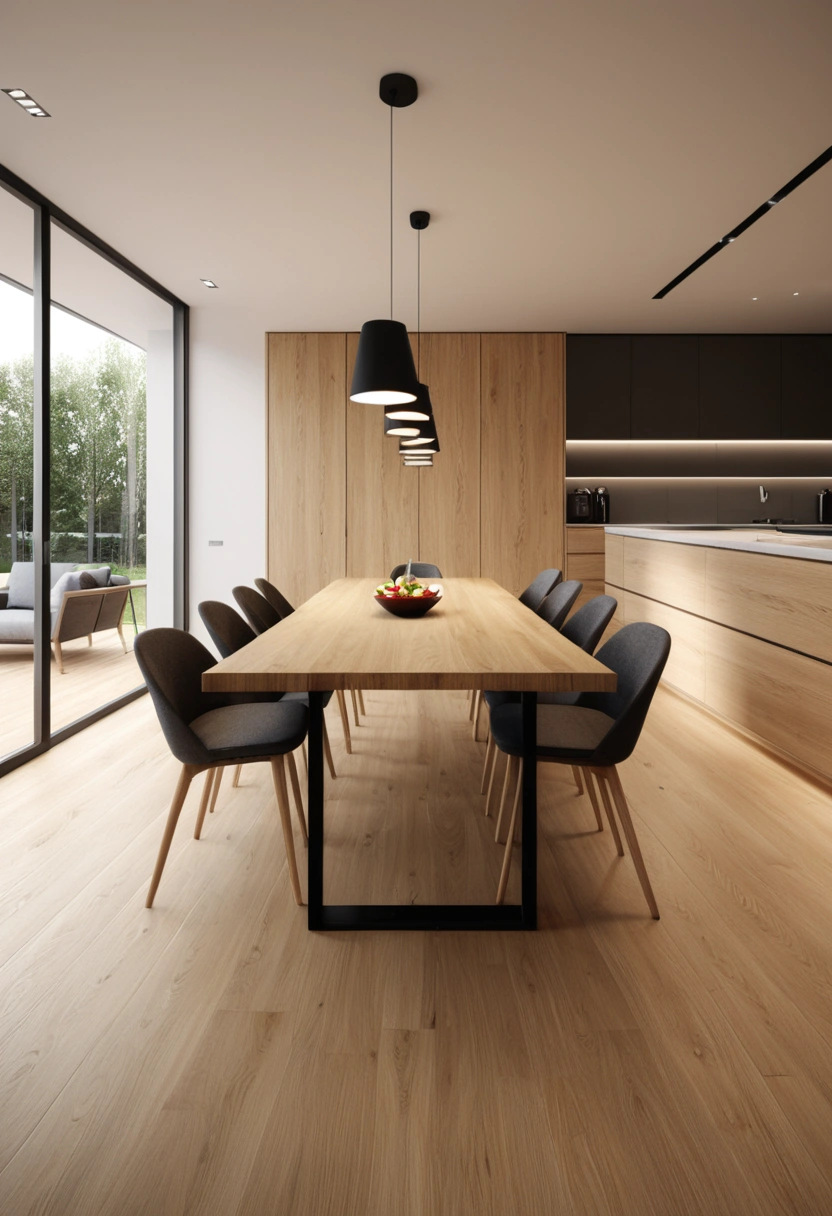
This flowing approach often appeals to contemporary homes wanting dining areas that connect seamlessly with other spaces. Subtle zoning techniques typically define dining areas while maintaining visual continuity.
Design consideration: Open plan dining often requires acoustic considerations while their integration should enhance rather than interfere with adjacent kitchen and living functions.
Practical benefit: Connected spaces typically improve family interaction while providing flexibility for entertaining that accommodates various group sizes and activities.
15. Indoor-Outdoor Connection
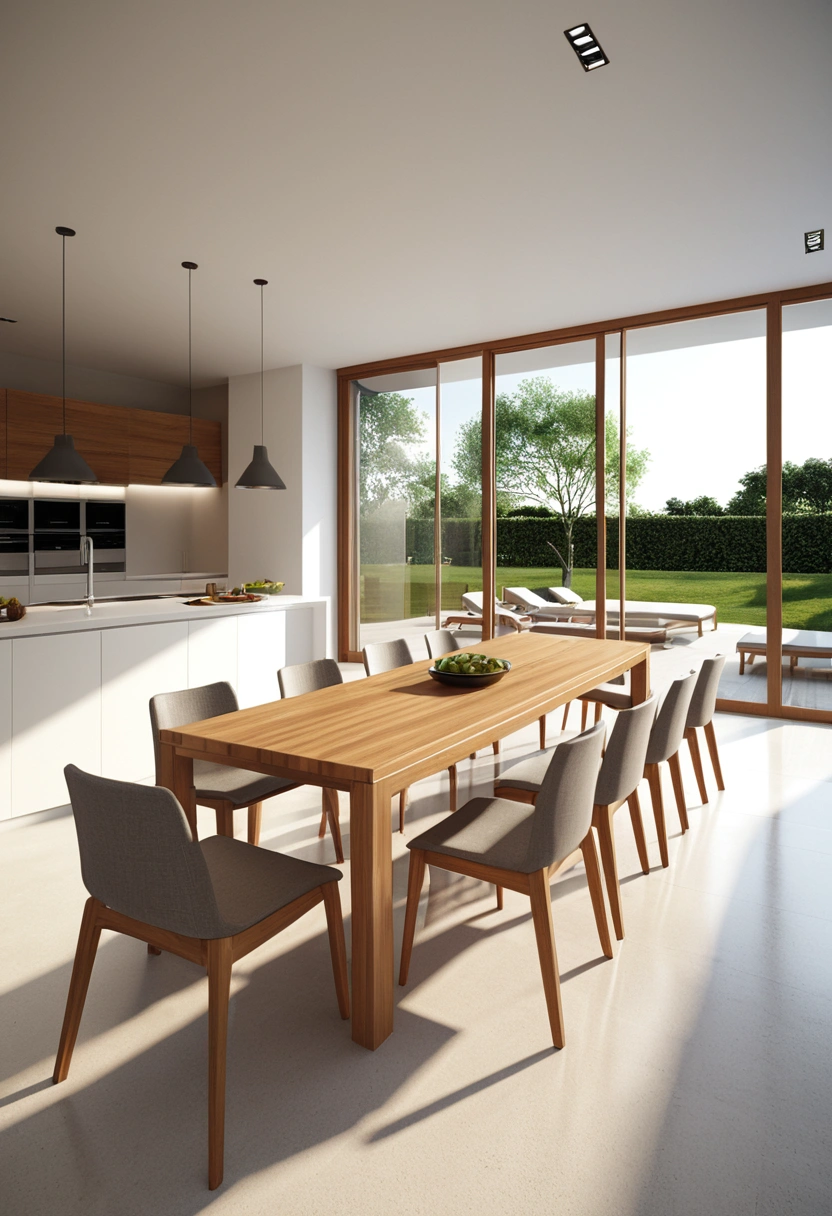

This environmental approach often appeals to homeowners wanting extended entertaining capabilities. Seamless transitions to outdoor dining typically expand usable space while maintaining design continuity.
Design consideration: Indoor-outdoor connections often require weather-resistant materials while their design should accommodate both protected and exposed dining experiences.
Practical benefit: Extended outdoor access typically increases entertaining capacity while providing natural ventilation and connection to garden and landscape elements.
16. Curated Art Display
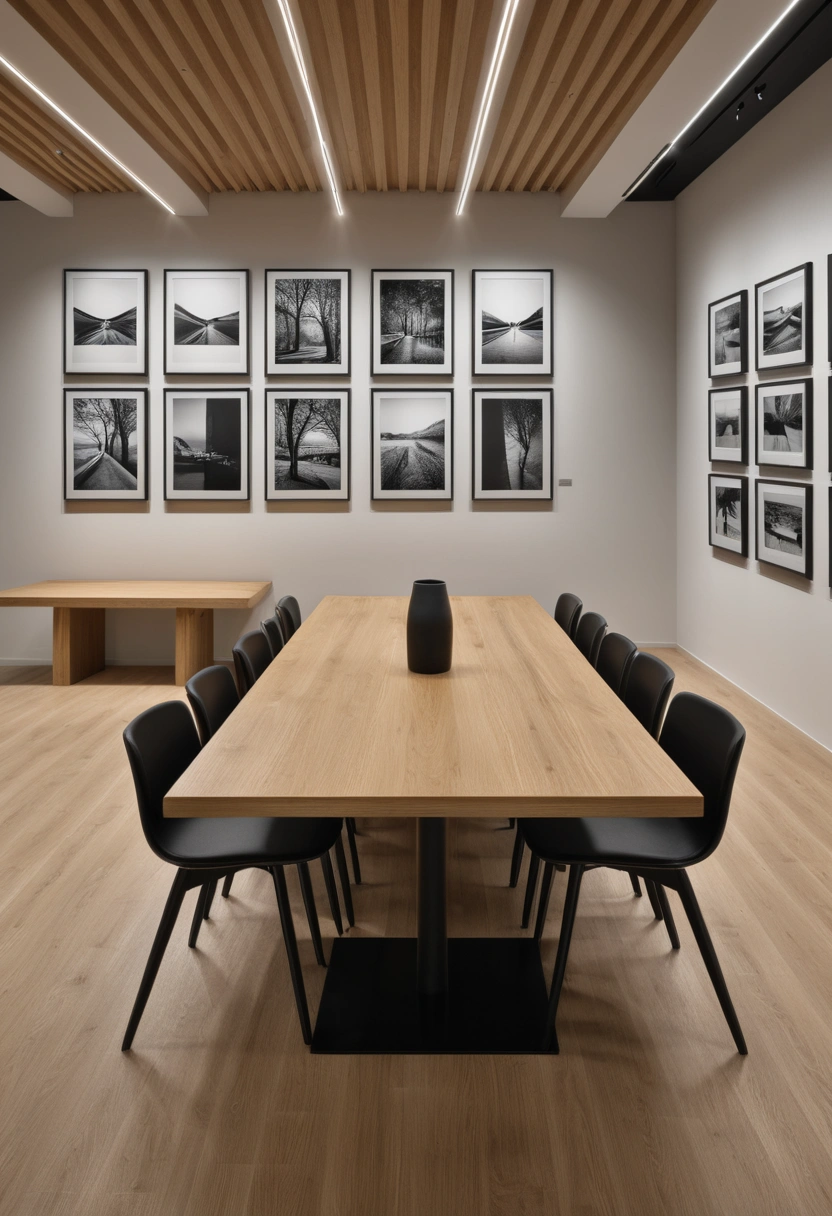

This personal approach often appeals to those wanting individual character within minimalist frameworks. Thoughtfully selected artwork typically provides personality while maintaining the restraint characteristic of Japandi aesthetics.
Design consideration: Art selections often work best in limited quantities while their framing and placement should enhance rather than compete with architectural elements and natural materials.
Practical benefit: Quality artwork typically provides lasting personal satisfaction while creating conversation pieces that enhance family dining and entertaining experiences.
17. Functional Ceramic Integration

This practical approach often appeals to homeowners wanting both utility and beauty. Handcrafted ceramics typically serve daily needs while showcasing the imperfect beauty central to Japanese design philosophy.
Design consideration: Ceramic collections often require appropriate display storage while their selection should balance functional needs with aesthetic appeal and cultural authenticity.
Practical benefit: Quality ceramics typically provide years of functional use while developing character through daily handling that enhances their authentic appeal.
18. Living Element Integration

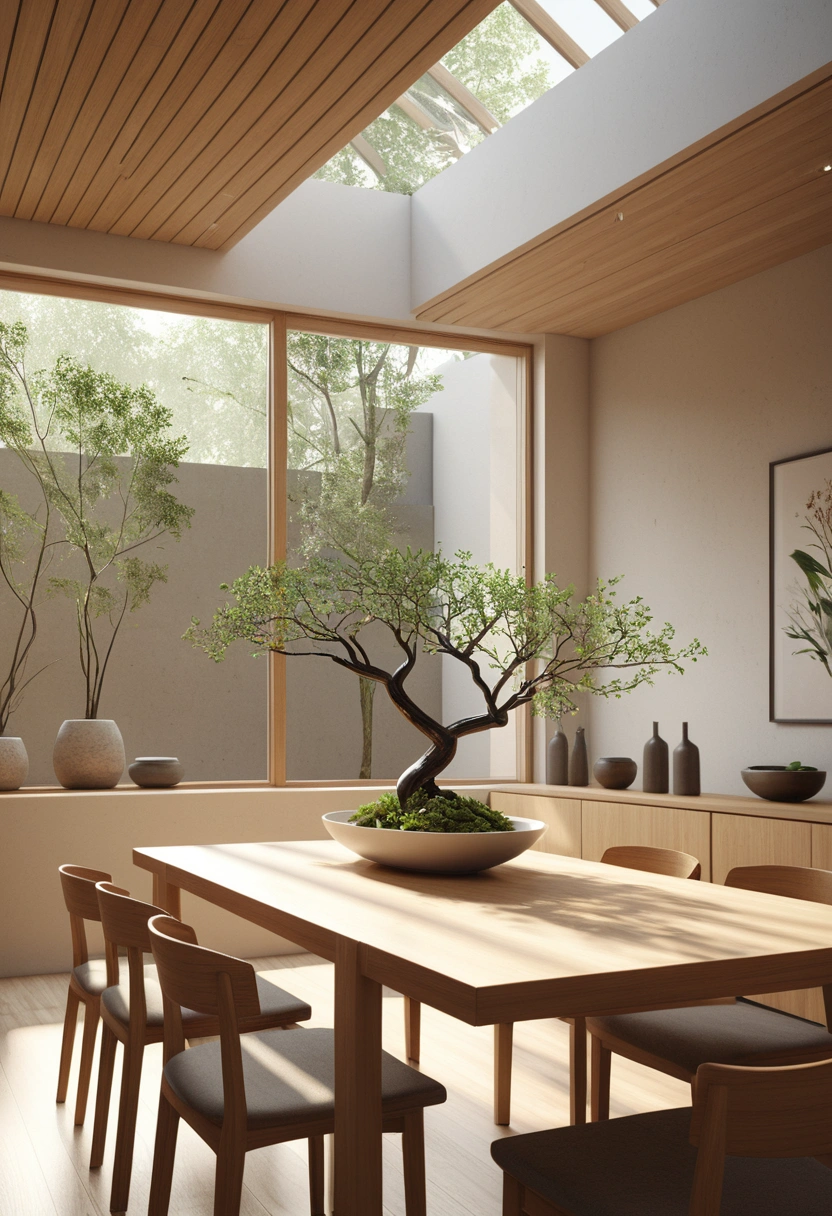
This natural approach often appeals to those wanting connection to nature within dining spaces. Carefully selected plants typically provide living beauty while supporting the biophilic elements essential to both design traditions.
Design consideration: Indoor plants often require appropriate lighting and maintenance while their selection should complement rather than overwhelm furniture and architectural elements.
Practical benefit: Living plants typically improve air quality while providing seasonal interest that connects indoor dining experiences with natural cycles and changes.
19. Technology Integration Solutions
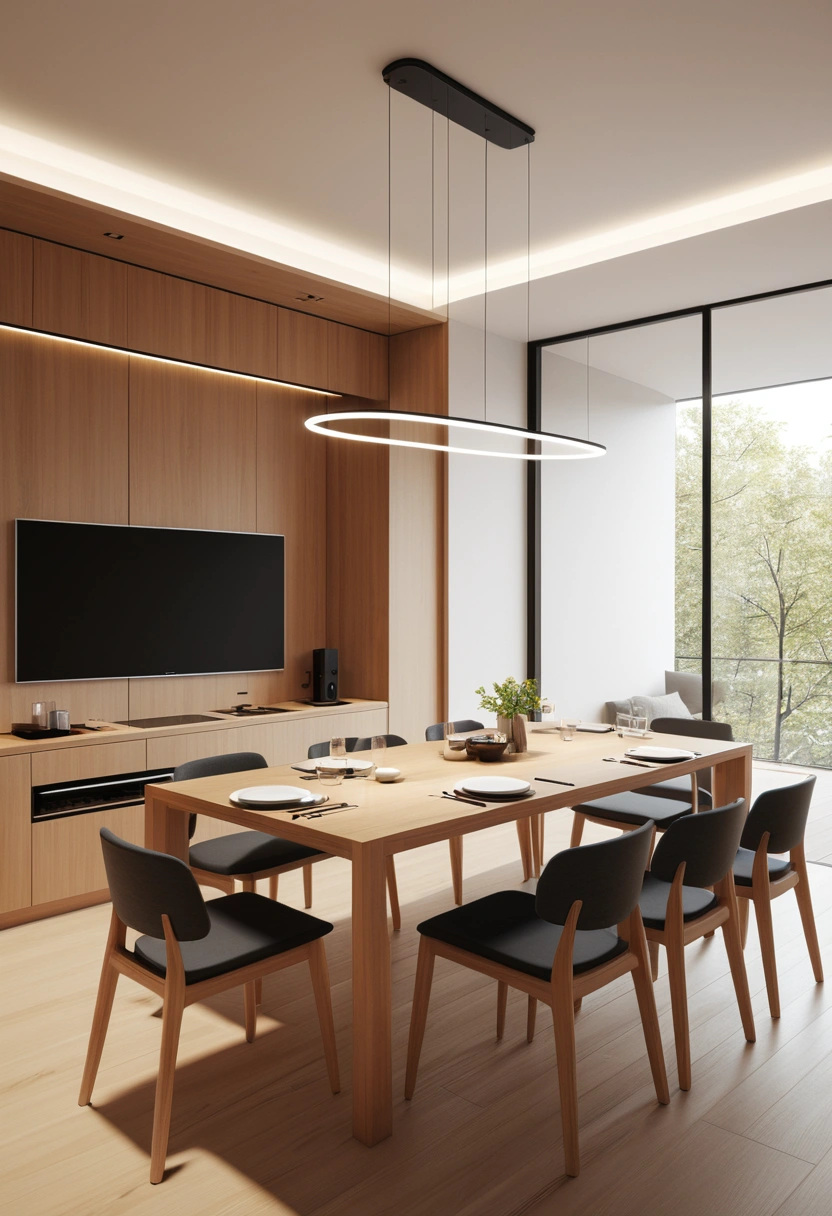

This contemporary approach often appeals to modern families wanting convenience without compromising aesthetic integrity. Hidden technology typically provides necessary functionality while maintaining the clean visual environment essential to Japandi design.
Design consideration: Technology integration often requires advance planning while its concealment should enhance rather than complicate daily use and maintenance access.
Practical benefit: Thoughtful technology placement typically improves daily convenience while preserving the calm, uncluttered atmosphere that supports mindful dining experiences.
20. Modern Material Applications

This innovative approach often appeals to homeowners wanting improved performance with traditional aesthetics. Contemporary materials that echo natural textures typically provide enhanced durability while maintaining authentic visual character.
Design consideration: Modern materials often require research for authenticity while their application should honor traditional proportions and visual relationships.
Practical benefit: Updated materials typically offer improved maintenance characteristics while providing longevity that justifies investment in quality dining room elements.
21. Sustainable Design Integration

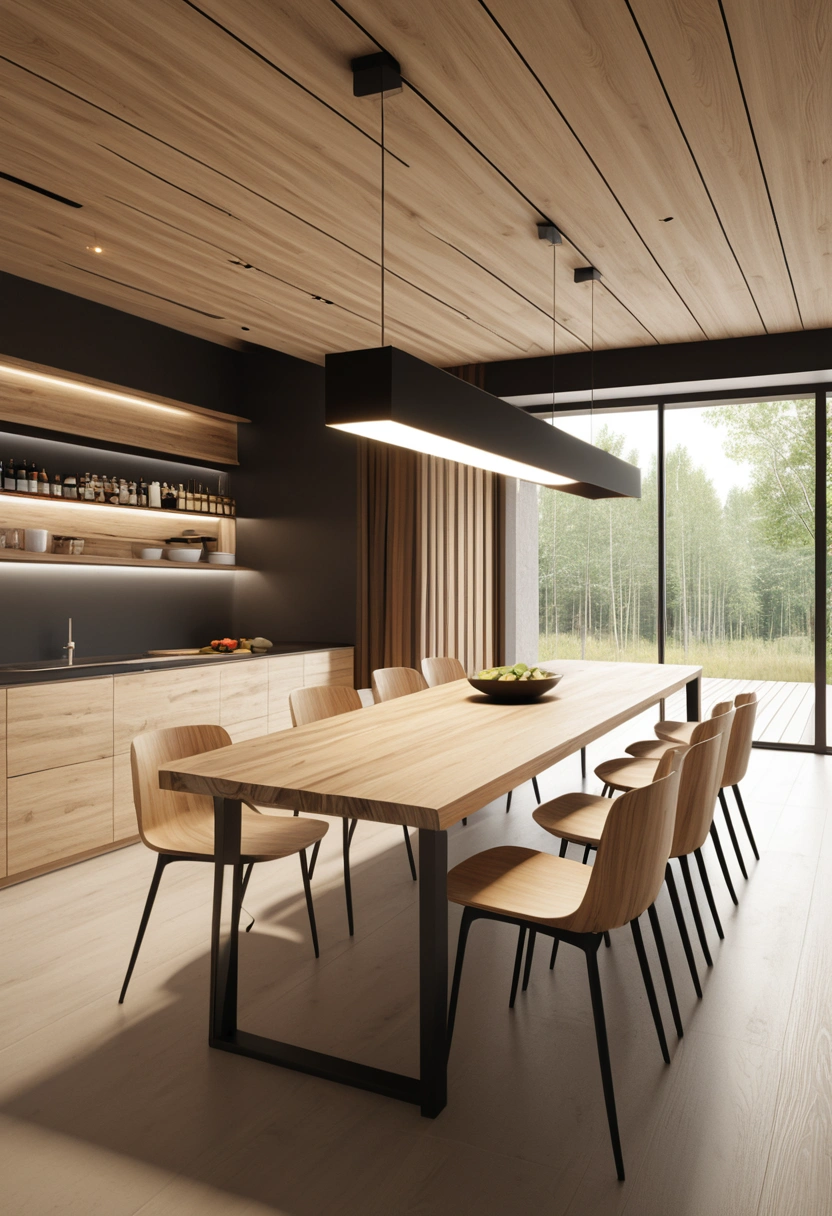
This responsible approach often appeals to environmentally conscious homeowners. Eco-friendly material choices typically align with Japanese and Scandinavian values while providing healthier indoor environments.
Design consideration: Sustainable materials often require verification of claims while their performance should meet practical demands for durability and maintenance in dining environments.
Practical benefit: Environmentally responsible choices typically offer improved indoor air quality while supporting manufacturing practices that align with mindful living principles.
Creating Your Japandi Dining Space
Through various minimalist design projects, I’ve observed that successful Japandi dining rooms often balance aesthetic restraint with practical functionality while incorporating natural materials that create warmth and character. These spaces typically succeed because they prioritize both visual calm and daily usability while maintaining the design discipline that defines both Japanese and Scandinavian traditions.
The Japandi approach often works well for modern families because it typically creates environments that support mindful living while accommodating contemporary dining needs. Effective implementation usually involves careful planning of storage and lighting systems, selection of quality natural materials, and integration of technology that enhances rather than disrupts the serene atmosphere.
Planning considerations often include assessing natural light throughout different times of day, storage requirements for dining essentials and seasonal items, and budget allocation between key furniture pieces and supporting elements. Many successful projects prioritize quality over quantity while ensuring that every element serves both functional and aesthetic purposes that support daily family life.
Remember: For any electrical work, structural modifications, or built-in installations related to dining room construction or renovation, always consult with licensed professionals to ensure proper installation and code compliance.


